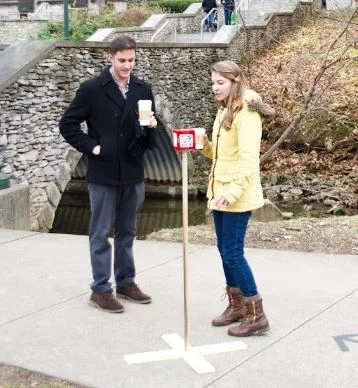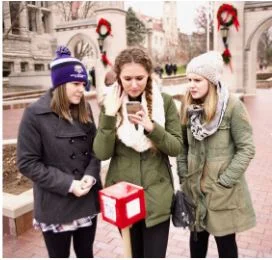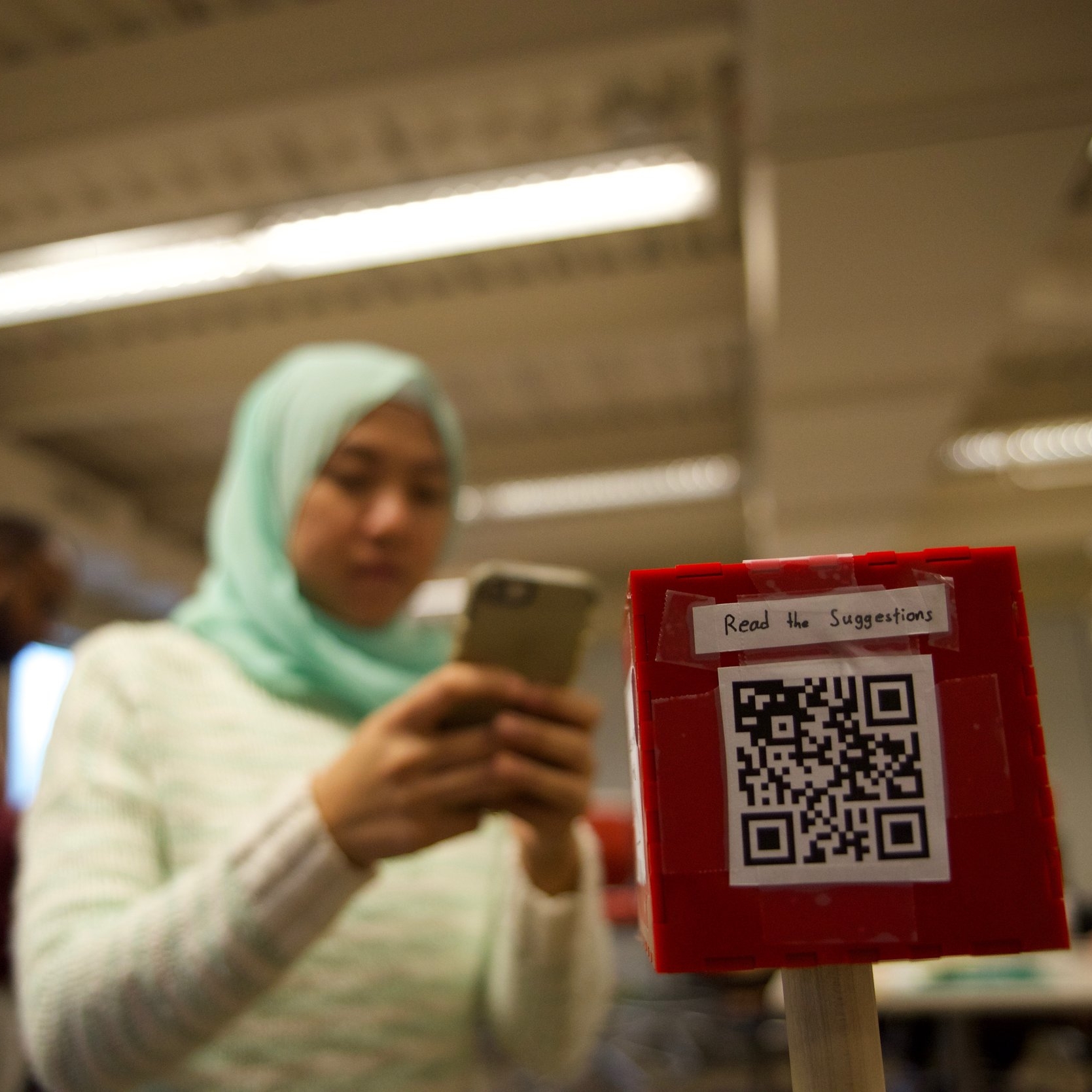The Project
Project Type
Prototyping
UX Research
3 Weeks
Team
Brant Hughes
Andrew Tatge
Roosevelt Faulkner
Role
Ideator, Researcher, Prototyper, Programmer
Governments look for ways to actively engage their citizens. One novel way is to engage citizens publicly through the smart use of digital technology (Hespanhol et al. 2016). We decided to explore citizen engagement because we felt this would be an opportunity to bring awareness to ideas, attitudes, policies, etc. and to include people in the decision-making process on government activities that affect their lives. We believe that cities improve when their citizens have a voice in how their city will be shaped.
CONCEPT
After narrowing our focus to civic engagement, we began to generate a series of devices that could facilitate public communication. We focused on devices which could solicit input from a participant -- either through a prompt, a theme, or simply by virtue of its location and context -- then aggregate, analyze, and display these sentiments in a space where they can have some impact.
Experience Prototype
To better understand the interactions our proposed designs required, we built an experience prototype that allowed members of the Bloomington, Indiana community to share stories about specific locations in an anonymous fashion. This prototype consisted of two components:
the artifact
The artifact we created utilized two separate QR codes to direct mobile users to different websites to either collect or display community opinions. The initial prototype was made of paper so we could cheaply and easily produce them and test them in many different contexts around town.
THE BACKEND
Once the user scans the QR code, they are directed to a Google Site landing page. The “Tell a Story” button sends the user to a Google Form where they can share their opinion of the space.
The content from their form submission is then tweeted out on a Twitter handle we created for each location, along with a hashtag for that location. For example, a suggestion given at the Sample Gates would include #SampleGates. Alternatively, community members can scan the other QR code and select "Hear a Story" to read others' suggestions.
Pilot Tests
We conducted our first tests in the Indiana University's HCI/d studio with designers. We briefed them about our design and where the prototypes would be located- Dunn Meadow, Sample Gates, Monroe County Library, and the IU Informatics Symposium - and asked them to engage with the device as if they had come across it in one of these spaces.
This exercise yielded the following insights:
- Both designers found the prototype intuitive, but suggested having labeling on all four sides, including the side with the QR code on it.
- One designer had a QR reader on her phone, while the other did not. The prevalence of QR code readers on mobile phones became a topic for further exploration.
- Both participants were able to navigate through the menus and leave remarks, but did not spend much time reading the “About” pages or participate with the additional surveys on the website.
MATERIAL EXPLORATION
We tried to laser cut our artifact out of cardboard but faced difficulties in getting the QR code reader to recognize the engravings. On our first attempt, the engraving was too faint to be read by a QR scanner. On the second attempt, the laser burned the cardboard, leaving marks/soot that made the QR unreadable. We moved from cardboard to acrylic as it was waterproof, a bolder color to draw attention, and was more resistant to damage. Taping printed QR codes to this surface allowed the QR codes to easily be read by a phones QR reader.
PUBLIC INSTALLATION
We deployed our prototypes in several locations around Bloomington, Indiana including Indiana University's Campus. These locations were selected as they isolated populations within our research to study differences between students, faculty, and community members and the effect of indoor and outdoor locations on community engagement.
Observing community members from a far and following up with interviews provided four key insights:
People do not trust pop-up prototypes - From participants commenting "Is it going to explode" to a security guard inspecting and then removing a device, it was clear there was little trust given to the prototype. Participants commented this was related to the artifact being a red homemade box with no indication of the parties responsible for its creation.
QR codes are understood but not common practice in the United States - Participants recognized the device was utilizing a QR code, but had only a vague understanding of how it worked. They recalled seeing QR codes on airplane tickets but had never used them themselves. The largest barrier to entry was that people simply did not have QR code readers on their phones. We noticed this was less of a problem for international students from Asia where this interaction is more prevalent.
QR codes are not accessible to children, the poor, the illiterate, and the disabled - QR codes are not descriptive in and of itself and require textual labels to provide meaning. This prevents community engagement from those who cannot read and voice-to-text input removes anonymity from the interaction. Furthermore, as this solution requires a smartphone with a data plan, it prevents children and the poor from contributing their opinions.
Participants lose interest once their curiosity is fulfilled - Of those that engaged with the artifact, 70% provided a response however it was clear from their responses that they did not understand the goal of the prototype. Additionally, follow through from the page in which they posted suggestions to the "About This Project" and "Read Suggestions" were extremely low. Admittedly, these findings could be a result of participants encountering the artifact for the first time whereas in a real deployment they would only interact with the prototype when they had a purpose.






